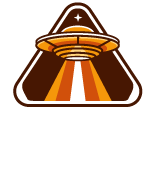The US Government Didn’t Operate the Paris Bombings
The United States government has been blamed for the Paris bombings by numerous politicians and news outlets. Some of the allegations against the US include: an improvised device, increased security measures, and the involvement of Amedy Coulibaly and Abdelhamid Abaaoud. While the government may have attempted to take responsibility for the attacks, it appears that the government was not as involved as some people have claimed.
Abdelhamid Abaaoud
Abdelhamid Abaaoud was the main figure behind last week’s coordinated terrorist attacks in Paris. The attacks left 129 people dead and hundreds injured, and the Islamic State has claimed responsibility. However, the United States has also been tracking Abaaoud for months. It’s been determined that he was in France when the attacks were carried out, and the Islamic State’s propaganda claims that Abaaoud had the ability to move from Syria to Europe undetected.
A French counterterrorism source said that Abaaoud had known Mehdi Nemmouche, the man responsible for the Jewish museum attack in May 2014. Several Belgian gangs were involved in Molenbeek, a neighborhood in Brussels where Abaaoud grew up. But, Belgian police sources say that Abaaoud’s cell was under the control of the ISIS’ senior leadership.
French authorities arrested eight people in connection with the attacks. The attacks were well-orchestrated and could have been planned by local cells. They were likely planned by foreign ISIS leaders who had gained experience in Europe.
Amedy Coulibaly
Amedy Coulibaly, a 32-year-old suspected of committing an act of terror in Paris, was killed on Friday by French police. He was one of three suspects in the attack.
The government announced a series of new rules on intelligence, phone tapping, and other issues to counter terrorism. President Hollande is expected to join a planned unity rally in Paris on Sunday. Prime Minister David Cameron of Britain and Italian Prime Minister Matteo Renzi are also expected to attend. In addition, Muslim African leaders and other world leaders will participate in the demonstration.
As the investigation into the attacks continued, questions were raised about how the two gunmen slipped through the security net. Cherif Kouachi, the eldest brother of the Charlie Hebdo shooters, was in prison in 2005. During his time there, he met Djamel Beghal, an al Qaeda European recruiter.
The brothers were members of the Buttes-Chaumont Islamist group. They had been under American surveillance for years. Both were on the US no-fly list. However, they had traveled to Yemen to train with the Al Qaeda in the Arabian Peninsula (AQAP), an offshoot of the terror organization.
An improvised device
Improvised devices aren’t new, but they are making a comeback. In the first nine months of 2011, 608 attacks were recorded across 99 countries. According to a government official, the attack may have been prompted by a video message from the Islamic State.
The government has taken steps to combat improvised devices. One of the most effective is border control. This is done to discourage the importation of improvised explosives.
It is worth noting that the number of attacks by non-state actors has increased in the past three years. As a result, the government has to deal with disinformation and a state-sponsored digital influence ecosystem. With these challenges, the government is left to do its best to protect its citizens.
Aside from the obvious, the DHS is working with its armed forces to prevent IED proliferation. To that end, the Terrorist Explosive Device Analytical Center (TEDAC) is the central repository for government-owned IEDs.
Increased security measures
The Paris bombings of November 13 were a horrific event. More than 130 people were killed and hundreds more were wounded.
While the death toll is still mounting, the French government has taken steps to strengthen security in and outside the country. In the wake of the attacks, President Hollande declared a state of emergency, allowing authorities to carry out raids without magistrate approval.
A total of four attacks took place in the French capital, killing at least 126 people. An employee of the police department in Paris was among the victims, while a school teacher was killed in the Conflans-Sainte-Honorine suburb, north west of the city.
A suicide bomber detonated a belt with shrapnel at the Stade de France, a sports arena. Another attacker detonated a belt at another entrance. Two other suspected suspects escaped during a firefight.
In addition to the Bataclan and Stade de France attacks, gunmen also attacked Le Carillon, a jazz club, and Cafe Bonne Biere, a kosher restaurant. They were targeting an association football match.



